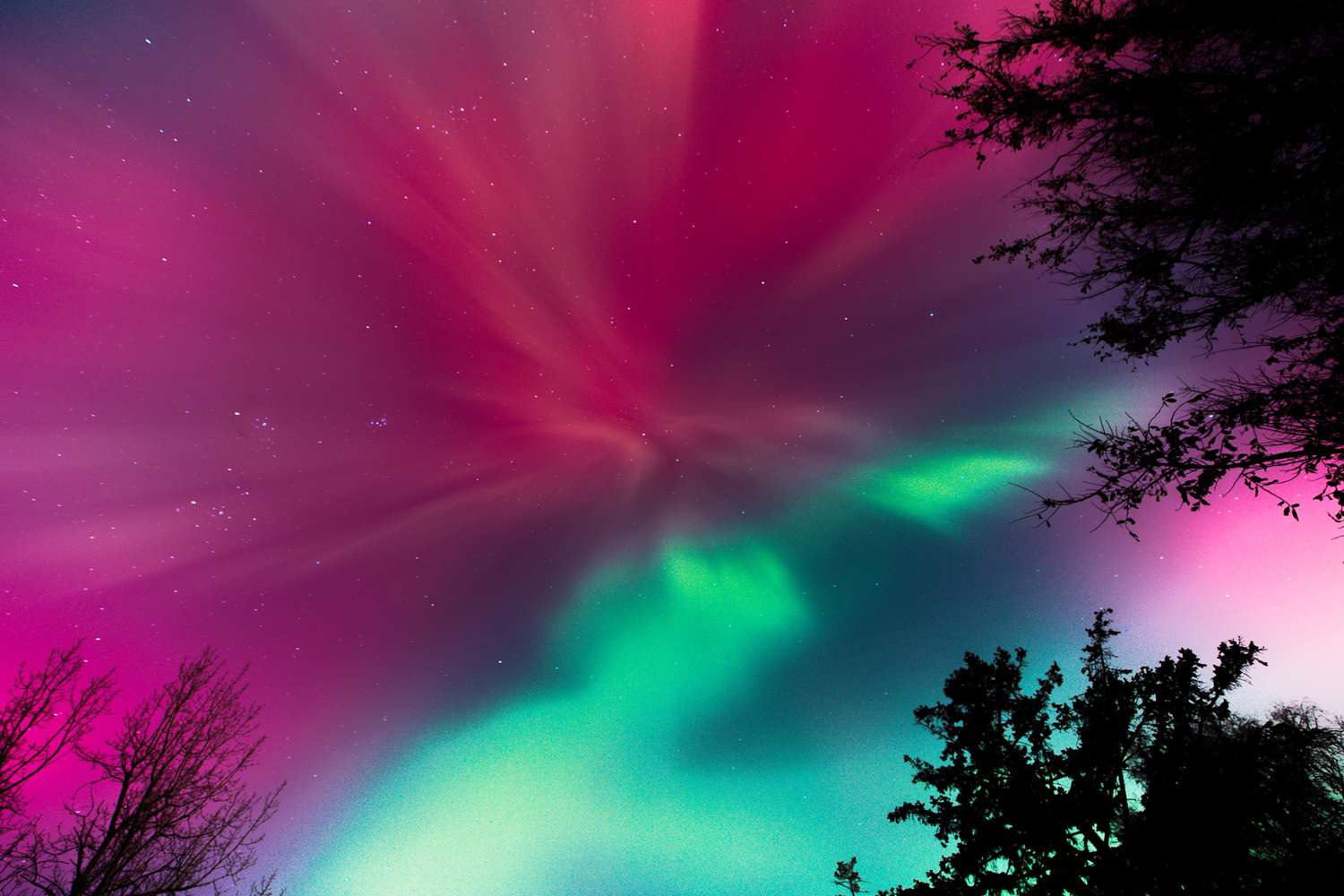NEED TO KNOW
The northern lights may appear on Wednesday and Thursday night, with NOAA predicting a Kp index of four and minor geomagnetic storm activity 10 states along the northern parts of the U.S have the best chance of catching a glimpse of the colorful aurorasExperts say to head somewhere dark with a clear north-facing view, and use your phone’s night or pro mode to capture the lights if they appear
The northern lights are making yet another cameo just in time for the holidays!
With a fresh wave of solar wind shaking up Earth’s magnetic field, the sky is gearing up for another cosmic performance, just as everyone settles in for travel, turkey and holiday chaos.
The aurora borealis (northern lights) is caused by geomagnetic storms, which occur when charged particles from the sun collide with gases in Earth’s atmosphere, creating brilliant waves of light in the sky.
NOAA forecasters say aurora activity is picking up again, which means those dreamy green and pink hues could shimmer across parts of the U.S. tonight and tomorrow.
With a Kp index of four this evening — on a scale that can reach up to nine — NOAA forecasters say auroras have a chance to appear brighter, with more “motion and formations.”
Read on for everything you need to know about this cosmic spectacle.
When will the northern lights be visible?
Northern Lights.
Lokman Vural Elibol/Anadolu via Getty
Aurora activity could kick off as soon as it gets dark on Wednesday, Nov. 26, and Thursday, Nov. 27, with NOAA predicting a Kp index of four both evenings.
That means brighter colors and more movement are possible, especially between 10 p.m. and 2 a.m. local time, when the lights tend to be most active.
Minor geomagnetic storm conditions (G1-level) are also expected, which boosts visibility before and after Thanksgiving.
Where will the northern lights be visible?
Northern Lights over Lake Berryessa, California.
Carlos Avila Gonzalez/San Francisco Chronicle via Getty
States in the northern U.S. have the best shot!
NOAA’s view line includes Washington, Idaho, Montana, North Dakota, South Dakota, Minnesota, Wisconsin, Michigan, Maine and Alaska. But if solar activity intensifies, the lights could dip farther south than forecast.
Skies need to stay clear.
How to watch the northern lights?
The night sky in Wisconsin.
Ross Harried/NurPhoto via Getty
Auroras can be very fickle!
The key is to head somewhere dark, quiet and as far north as possible. You’ll want a clear, unobstructed view of the northern horizon, ideally from a hill, field or anywhere away from city light pollution.
Plan to be outside between 10 p.m. and 2 a.m., when auroras tend to peak, and keep looking up — the northern lights can appear suddenly and fade just as fast.
How to take photos of the northern lights?
Your smartphone is more powerful than you think.
Turn on Night Mode (iPhone) or Pro Mode (Android). Turn off your flash, hold steady and use a tripod if you have one.
Shooting with a DSLR? Grab a wide-angle lens and aim for longer exposures to capture the colors and movement.

